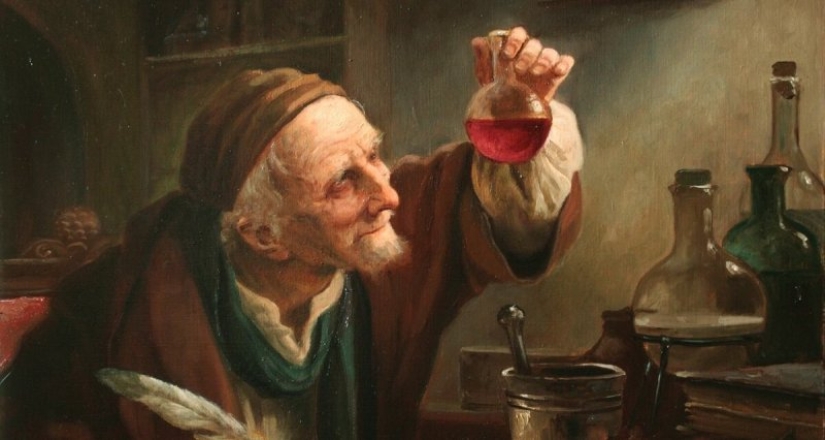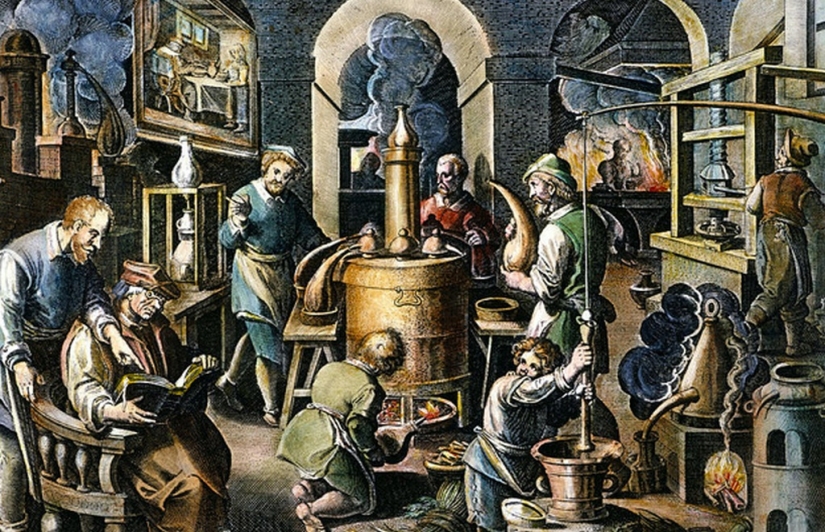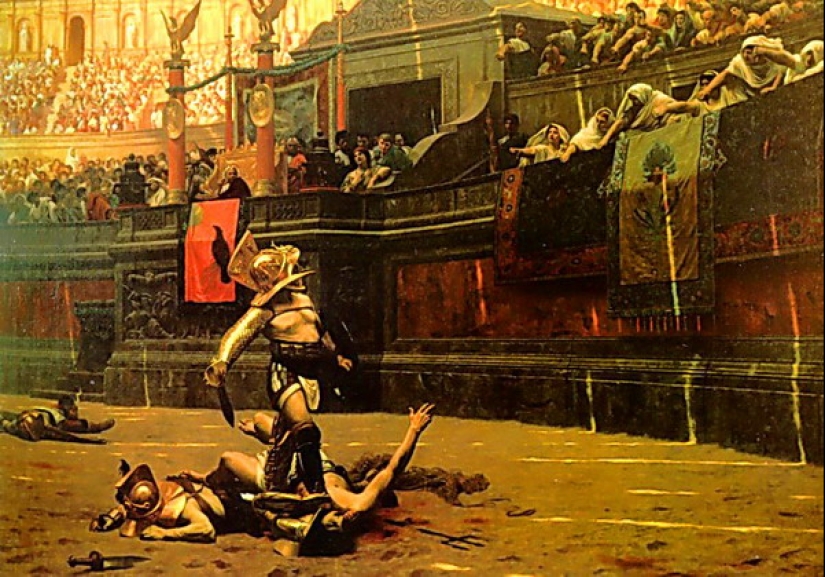10 creepy medicines that were made from the dead
The history of medicine knows many examples when medicines were made from strange and even dangerous substances. But the most unusual drugs were made from dead people. Because of the difficulty of obtaining and the eerie aura surrounding them, they were considered the most effective, although they only brought harm to people. We will tell you about 10 remedies for ailments that in the old days were obtained from the bodies of the dead.

People have been making medicines from the dead since time immemorial. The first information about them is in ancient Roman sources, but we can confidently say that they were used before. Moreover, people were treated with these terrible drugs until the beginning of the 20th century, and in some places, such therapy is still practiced in places remote from civilization.

Dead bodies were once a valuable commodity. Apothecaries, healers and just the suffering willingly bought parts of the dead. In the Middle Ages, after the execution of the next criminal, whole queues were often lined up to the executioner. He dismembered the corpse and sold it by weight and in pieces almost without a trace. Thefts of bodies from cemeteries were also common, which even made it necessary to take tough measures.
There is a completely rational explanation for all this. People have believed for centuries that when eating someone else's flesh, the vital forces of the deceased pass to them. Therefore, medicines from humans were so in demand and were considered the most miraculous.
Gladiators were known for their strength and bravery. It is not surprising that the citizens of Ancient Rome believed that if you eat the liver or drink the blood of a fallen fighter in the arena, you can get some of these qualities. The main admirers of such treatment were epileptics. The Roman physician Scribonius Larg once said that the blood and liver of a gladiator killed in battle can relieve seizures.

In order for the remedy to work, it had to be consumed raw and as quickly as possible. Therefore, in Rome there were always enough people willing to fall to the bleeding wounds of a still warm body or participate in its evisceration. In the 400th year of our era, fighting in the arena was banned. Therefore, patients with epilepsy have found a new source of blood — in places of execution of criminals.
The belief in the healing power of the blood of a murdered person lived among the people until the beginning of the 20th century. The sufferers came to the scaffolds, where they chopped off their heads, with mugs, hoping to get hold of a life-giving drug. In the 16th century in Germany, a patient clung directly to a severed neck, because he had nothing to draw blood into. The source says that his terrible act did not cause the crowd the slightest condemnation.
The blood of monarchs was especially highly valued. When Charles I Stuart, King of England and Scotland, was beheaded in London in 1649, his subjects washed their faces with his blood right on the scaffold. It was believed that even touching the monarch could get rid of many ailments, let alone his fresh blood. It is said that the executioner and his assistants made good money selling sand soaked in the king's blood.
It just so happened that Charles I was the first after his death to become a medicine himself, and his son, Charles II, the inventor of a drug with human remains. The ruler was keenly interested in alchemy and got a recipe for the so-called "Drops of Goddard". The author of the medicine is the healer and alchemist Jonathan Goddard, who was Oliver Cromwell's personal physician. For the secret of the composition of the drops, he was paid a huge sum of 6 thousand pounds at that time.
The drug became so popular that it was sold for another 200 years. It was called "Royal Drops" and, according to many, helped from seizures and high blood pressure. The drops included two pounds of deer antlers, two pounds of dried viper, and the same amount of ivory. But the main component of the remedy was a human skull crushed into powder. It had to be taken from a hanged man or, at least, from a person who did not die a natural death.
The ingredients were crushed, mixed, and then distilled into a liquid state. Experts believed that without a human skull, the medicine would be useless. In the Middle Ages, it was believed that the soul of a murdered person remains in his body, including in his head. A part of the soul, getting into the patient's body, endowed him with the vital forces of the deceased.
In general, skulls were very popular with pharmacists and healers. Mosses, lichens and fungi growing on heads lying in the open air were also considered curative. They were called by the common word "usnea" and were searched for on the battlefields. The skull had to be taken only from a person who had fallen from a weapon, so ordinary remains were not suitable.
Usnea was used not only in the dark times of the Middle Ages, but also in the relatively enlightened 17th and 18th centuries. Most often, dried and crushed moss and lichen were sniffed as tobacco. Then they believed that it helps to stop bleeding, including internal bleeding. Usnea was also used for gynecological diseases, epilepsy and nervous disorders.
In 1651, the English physician and alchemist John French published the book "The Art of Distillation". It contained a recipe for a wonderful drug — tincture from the human brain. The instructions for preparing the medicine looked like this:
The resulting puree had to be poured with wine alcohol and buried in fresh horse manure for exactly six months. The resulting substance was passed through an alembic and a mysterious distillate was obtained. French himself served as a military doctor, so he had no difficulty finding raw materials for his invention.
Today, everyone knows about the benefits of badger fat, which can be bought at any pharmacy. The rarer and more valuable bear is also in demand. But there were times when people were more interested in human fat, which many people are so diligently getting rid of today.
The main suppliers of such fat, as it is easy to guess, were the executioners. Those who wanted to get a valuable substance came with containers directly to the scaffold. It was dangerous to buy fat in pharmacies, since the seller could insidiously dilute it with a product obtained from animals. Human fat rubbed ulcers and sore joints, and sometimes even managed to treat breast cancer in women.
George Thomson, an English physician who lived in the 17th century, was a great expert in using parts of dead bodies for treatment. He also practiced the treatment of plague with urine, and gynecological disorders with an infant placenta. But the strangest drug Dr. Thomson offered to patients with hemorrhoids. In a sore spot, he recommended rubbing... the sweat of a dying person.
Sweat was taken from those sentenced to death. The doomed sweated profusely from fear, and the executioner turned the secreted liquid into money, selling it to the sick. When there was no sweat, a patient with hemorrhoids could simply touch the severed head or the body of a hanged man. Some believed that it also helps with hemorrhoids.
The dead were used for treatment not only in Europe, but also in China. A manual on the creation of a healing "honey mummy", compiled in the 16th century by the physician Li Shizhen, has reached our days. He described a recipe brought by Arab merchants to China along the Great Silk Road. To prepare the medicine, it was necessary to take an elderly volunteer. The old man was fed only honey and bathed in honey every day.
Over time, the unfortunate even began to defecate with pure honey. But such a diet quickly led to death, which was what the pharmacist needed. The body of the deceased was placed in a barrel and filled with honey for a hundred years. During this time, the corpse turned into a mummy, more like a lollipop. It was sold in parts as a remedy for brittle bones and all kinds of wounds. Mummies were in demand in China and even served in Europe.
The ancient tombs of Egypt were not only a source of untold treasures. They have also been supplying medicine called "Mumia" to the pharmacy market for centuries. It was a powder from an embalmed deceased, which, in addition to the ashes, contained herbs, vegetable and mineral resins and other components. The remedy was in demand from the 12th to the first half of the 20th century.
The powder from the mummy was not cheap. At the beginning of the 20th century, a kilogram of the product was sold in Germany for 12 gold marks. At the same time, it was sold not only by private owners, but also by reputable companies. Among them, the pharmaceutical giant Merck is quite a solid company. The demand for mummies has given rise to an industry of their forgeries. Forgers took an ordinary corpse and processed it with different compositions. Then the body was dried in the sun until it looked like an Egyptian mummy.
In Europe, even in the 20th century, the use of mummies for medicinal purposes was completely legal. It was also considered normal to "pseudo-mummify" bodies to create medicines. The technology was created by doctors of the 17th century from Germany. The drug, called "Red Tincture", was described by the German pharmacist Oswald Kroll. This man prepared the drug himself and sold it in London.
As the basis of the tincture, they took the body of a young man of strong build, who had a red face during his lifetime. At the same time, the color should have been caused by health, not consumption or drunkenness. The ideal was the corpse of a guy under 24 years old, hanged or executed by beheading. After death, the body was supposed to lie down for a day in the open air in good weather.
Then the corpse was cut into pieces, which were seasoned with myrrh and aloe. The treated body parts were hung out on the street for two days. They were supposed to absorb the energy of the sun during the day, and the power of the moon at night. Then the meat was smoked and distilled. The resulting liquid, which had a pronounced cadaverous smell, was diluted with essential oils and flavorings. "Red tincture" was considered almost a panacea and was very expensive.
